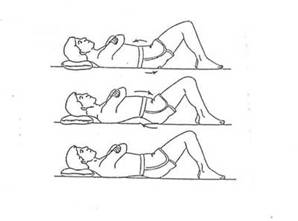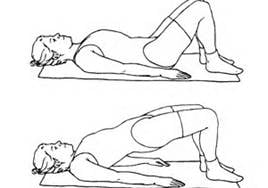Spinal Pain Management in Practice for Busy Professionals
Last week we looked at the rates of low back pain and associated economic costs across Australia. For more information, see Back Care on the Fly: Part 1: http://www.employhealth.com.au/blog/back-care-fly-part-1/. At Employ Health we have recognised that workers who are highly mobile and travel extensively for work often miss out on their company’s health, wellness and injury prevention programs. In order to address this, we provided 8 tips to tackle back pain for busy, traveling professionals.
One of the tips recommended was to carry out your physiotherapy program whilst traveling for work. It’s imperative that a physiotherapy program for back pain focuses on optimising spinal movement patterns, range of motion and lumbo-pelvic strength. If you’re traveling for work it also vital that the program can be completed without any equipment. Traveling professionals need a program that could be completed in any hotel room in the country. Here is my recommended, basic physiotherapy program to manage and prevent back pain for busy professionals:
- Walk – go for a 30 minute walk each day. Research supports exercise therapy for managing and preventing back pain. If you’re in a new town or city it will also give you the chance to explore your new surroundings.

- Pelvic tilts – start in supine, then move into four-point kneeling, sitting or standing. A pelvic tilt in sitting is a great way to break up prolonged loading of the spine if you’ve got a long drive or flight. Think of it as a pause exercise to get the joints and discs of your back moving. 2 sets of 20 reps.

- Bridge – lumbo-pelvic strength is a must. For a long time ‘core strength’ focussed on TA activation, although we know now from contemporary evidence that this constant activation and focus was unnecessary. You don’t need your core on 100% of time time, but you do need a functionally strong trunk and pelvic region. A bridge is an excellent exercise to facilitate this. Try to focus on posteriorly tilting your pelvis and utilising your gluteal muscles to lift your pelvis (or bridge). Don’t tense your ‘core’, your trunk will activate as it needs. To progress this exercise, you may want to try a single leg bridge, or extending your knee whilst maintain the bridge (you’ll need a little more trunk muscle activation for this progression). 3 sets of 10 reps. Complete for each side if you’ve progressed.

- Side lying bow & arrows – your spine is one unit, and stiffness through the thoracic region with lead to discomfort and overload of the lumbar or cervical spine. An entry level exercise for improving thoracic range of motion is side lying bow & arrows. To progress make use of a large ‘wind-screen wiper’ movement coupled with a deep breath. 3 sets of 10 reps, for each side.

So there you have it, a very basic but very achievable physiotherapy exercise program for your spine that can be completed from any hotel room in the world. If you’ve got any questions about any of the exercises please feel free to email me at zac.lowth@employhealth.com.au.
Employ Health have recently had to innovate around our ability to deliver workplace physiotherapy services for mobile professionals who work for our current partners. We are excited to have developed Rapid Response Physio, our phone-based physio-delivered telehealth service, so that we can be in 24/7 contact with workers irrespective of their location. This service is backed up by our newly released Employ Health app. The Employ Health app allows workers to have ongoing and unrestricted access to their physiotherapy program on their smart phone, tablet or computer. They also have the opportunity to message their physio and give feedback on their exercises. If you’d like any further information on these services for workers at your company, please don’t hesitate to get in touch or visit www.employhealth.com.au.















